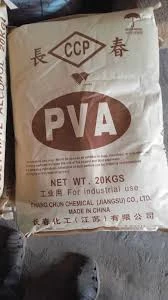Constructing HPMC An Overview of Hydroxypropyl Methylcellulose
Hydroxypropyl Methylcellulose (HPMC) is a versatile and widely used polymer derived from cellulose. As a non-ionic compound, HPMC is distinguished by its ability to dissolve in water, forming a viscous solution that can be utilized across various industries, including pharmaceuticals, food, and construction. Understanding the construction and application of HPMC is essential for industries reliant on its unique properties.
Synthesis of HPMC
The construction of HPMC begins with cellulose, a natural polymer obtained from plant cell walls. The process involves two main chemical modifications hydroxypropylation and methylation. In hydroxypropylation, propylene oxide reacts with cellulose to introduce hydroxypropyl groups, enhancing the solubility of the polymer in water. Subsequently, methylation occurs, wherein methyl groups are introduced to the cellulose backbone. The level of substitution of hydroxypropyl and methyl groups can be controlled to tailor the properties of HPMC for specific applications.
Properties of HPMC
HPMC boasts a range of desirable properties, making it an ideal candidate for numerous applications. One of its primary characteristics is its viscosity, which can be adjusted based on the degree of substitution and the concentration of HPMC in solution. This viscosity is crucial in formulations requiring thickening agents, such as in paints and coatings. Additionally, HPMC exhibits excellent film-forming capabilities, making it valuable in pharmaceuticals for creating sustained-release drug formulations and in the food industry as a binding agent.
construct hpmc

HPMC is also known for its stability under varying pH and temperature conditions. This stability ensures that HPMC-based products retain their functional properties, whether in an acidic or basic environment, making HPMC suitable for a wide range of formulations. Moreover, HPMC is generally regarded as safe (GRAS) by regulatory agencies, further bolstering its popularity in consumer products.
Applications of HPMC
The applications of HPMC are extensive. In pharmaceuticals, HPMC is commonly used as a binder in tablets, promoting effective dosage form stability and controlled release. It is also employed in gel formulations and as a thickener in various topical applications. In the food industry, HPMC serves as a thickener, emulsifier, and stabilizer, enhancing the texture and shelf-life of products.
In construction, HPMC is increasingly recognized for its utility in formulating mortars, grouts, and other building materials. Its water-retaining properties improve adhesion and working time, making it indispensable in tile adhesive and cement formulations.
Conclusion
The construction and application of Hydroxypropyl Methylcellulose illustrate the transformative power of cellulose derivatives in modern technology. With its unique properties and versatility, HPMC continues to play a crucial role in enhancing product performance across various sectors. As research and development in polymer chemistry advance, HPMC is poised to find new applications and improvements, further solidifying its importance in both industrial and consumer products.
-
Rdp Powder: Key Considerations for Wholesalers in the Building Materials IndustryNewsJul.08,2025
-
Key Considerations for Wholesalers: Navigating the World of Hpmc - Based ProductsNewsJul.08,2025
-
Hpmc Detergent: Key Considerations for WholesalersNewsJul.08,2025
-
Key Considerations for Wholesalers: China Hpmc For Tile Adhesive, Coating Additives, Concrete Additives, and MoreNewsJul.08,2025
-
Crucial Considerations for Wholesalers: Navigating the World of Construction MaterialsNewsJul.08,2025
-
Key Considerations for Wholesalers Sourcing Additive For Cement, Additive For Concrete, Additive For Putty from Additive Manufacturer Shijiazhuang Gaocheng District Yongfeng Cellulose Co., Ltd.NewsJul.08,2025




